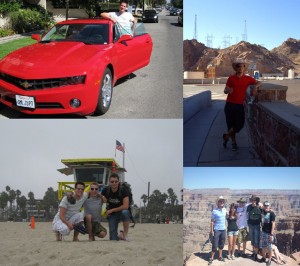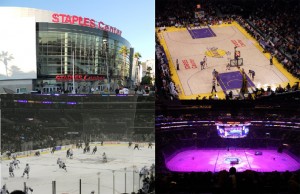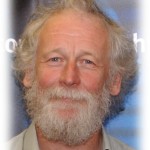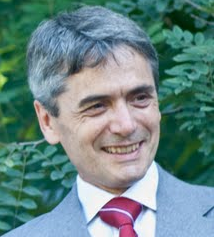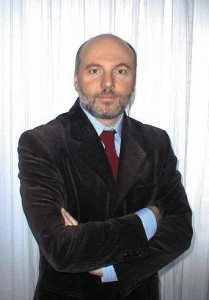 A key requirement in packet switching networks is an efficient way to access information stored within the routers. The most obvious example is the routing table and its associated forwarding information, accessed at least once for each packet traversing the router, but advanced protocols may require to store and access flow state information too, adding scalability problems as well. In this seminar, an innovative, highly efficient way to exploit the cooperation between end nodes and intermediate systems will be presented. It is based on Distributed Linked Data Structures (DLDS), an extension of the classical linked data structures where pointers are stored in data packets, travel along the route from sender to receiver and address memory locations within the routers belonging to the path. When integrated in network protocols (for example as a new IP option field), DLDS provide the router the memory addresses needed to access the required information without the need of searching. This leads to constant cost procedures, increasing performance and overcoming scalability problems. DLDS may support several different applications; two of them will be discussed in detail: resource reservation for deterministic Quality of Service support (based on an algorithm called REBOOK) and routing tables lookup.
A key requirement in packet switching networks is an efficient way to access information stored within the routers. The most obvious example is the routing table and its associated forwarding information, accessed at least once for each packet traversing the router, but advanced protocols may require to store and access flow state information too, adding scalability problems as well. In this seminar, an innovative, highly efficient way to exploit the cooperation between end nodes and intermediate systems will be presented. It is based on Distributed Linked Data Structures (DLDS), an extension of the classical linked data structures where pointers are stored in data packets, travel along the route from sender to receiver and address memory locations within the routers belonging to the path. When integrated in network protocols (for example as a new IP option field), DLDS provide the router the memory addresses needed to access the required information without the need of searching. This leads to constant cost procedures, increasing performance and overcoming scalability problems. DLDS may support several different applications; two of them will be discussed in detail: resource reservation for deterministic Quality of Service support (based on an algorithm called REBOOK) and routing tables lookup.
Pier Luca Montessoro was born in Torino, Italy, on November 25, 1961. He received the Dr. Eng. degree cum laude in Electronic Engineering from the Politecnico di Torino, Italy, in 1986. He has been with the Consiglio Nazionale delle Ricerche (C.N.R.), the Italian National Council for Scientific Research, from 1988 to 1992. During this period he has also been scientific consultant for the Digital Equipment Corporation (later Compaq) in Hudson, Mass. (USA) in the field of simulation for VLSI design. His teaching and research activities began at Politecnico di Torino where he taught computer programming, computer architectures, computer networks and databases in a Management Engineering course from 1990 to 1994. In November 1992 he moved to University of Udine as associate professor in computer science and since Novembre 2002 he is full professor. His teaching activity at the engineering faculty is on computer science fundamentals and computer networks. He recorded two video-courses for the Nettuno on-line university, he is author of several didactic publications, more than sixty scientific papers, some patents and together with Silvano Gai and Pietro Nicoletti wrote a popular book („Reti locali: dal cablaggio all’internetworking“, SSGRR, in italian) on structured cabling systems, LAN and internetworking, also included in their multimedia CD-ROM. His research interests, after several years spent on CAD for digital circuits design and, later, on multimedia systems for teleteaching and e-learning, are currently focused on computer networks and network security and on pervasive computing. From 2003 to 2009 Pier Luca Montessoro has been head of the Electrical, Management and Mechanical Engineering Department and from 1995 to 2002 director of the Computer Center of the University of Udine. He has been member of the NCGT of the CRUI („Conferenza dei Rettori delle Università Italiane“) for the GARR computer network, the italian research network, president of master course in Multimedia Sciences and Technologies of the University of Udine, rector’s delegate for the computer networks and telematic systems of the University of Udine, member of the Tecnical Board („Comitato Tecnico“) of the CINECA consortium; He is currently representative of University of Udine in several national committees. Related to the interest in multimedia systems, Pier Luca Montessoro developed some studies about musical piracy and has been consultant of magistrates in several proceedings. He is also member of SIAE („Società Italiana degli Autori ed Editori“), the italian authors and editors society, as composer and song writer.
zp8497586rq


 as Praktikum läuft bis jetzt sehr gut und die Kollegen sind wirklich sehr nett und hilfsbereit. Ich habe meine Arbeitszeit damit verbracht die Adobe Produkte für Videostreaming, Playback und Enhancement auf Desktopsystemen und Android Smartphones zu untersuchen. Dabei habe ich mich speziell mit Streamingmethoden wie dynamisches HTTP Streaming und Video Processing am Client auseinandergesetzt. Alle Details kann ich aber leider nicht verraten 😉
as Praktikum läuft bis jetzt sehr gut und die Kollegen sind wirklich sehr nett und hilfsbereit. Ich habe meine Arbeitszeit damit verbracht die Adobe Produkte für Videostreaming, Playback und Enhancement auf Desktopsystemen und Android Smartphones zu untersuchen. Dabei habe ich mich speziell mit Streamingmethoden wie dynamisches HTTP Streaming und Video Processing am Client auseinandergesetzt. Alle Details kann ich aber leider nicht verraten 😉